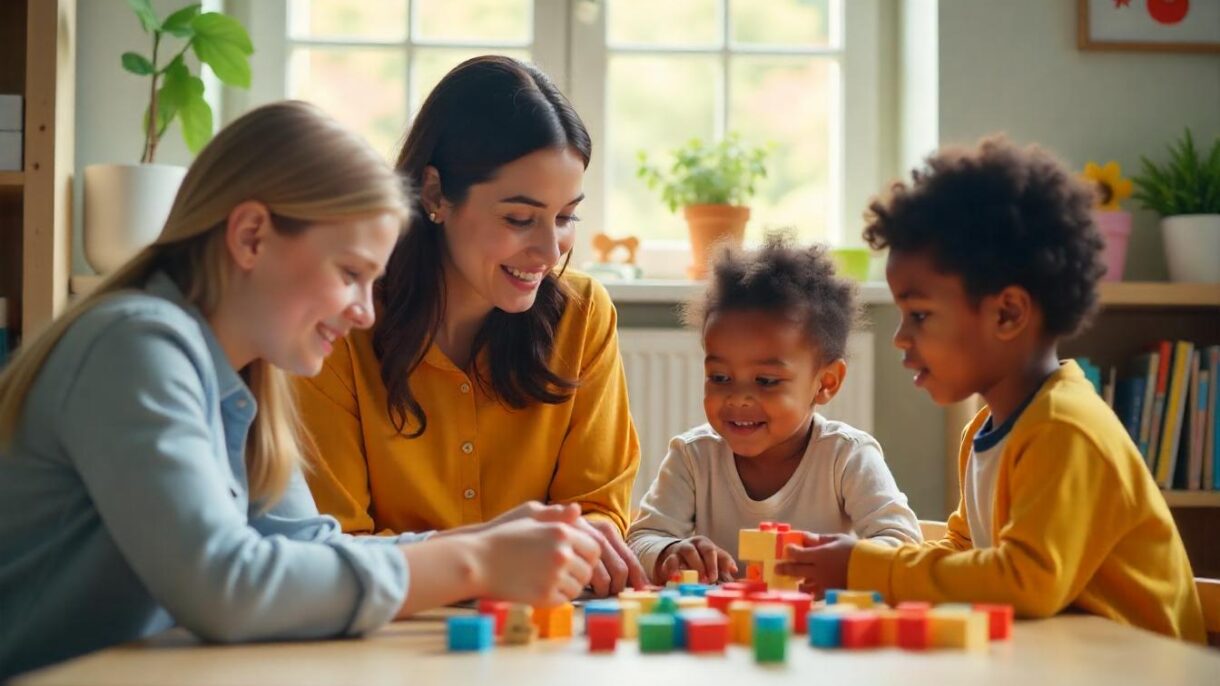- Overview.
Jean Piaget’s theory of cognitive development explains how children construct and focus on a child’s mental (biological) development. His theory runs basically on four stages of cognitive growth.
- Sensorimotor Stage (Birth to 2 years). At this stage, the child learns the world through its senses and actions. The child realizes that other people are different from them. At about eight months, the child will understand the presence of a toy and will search for it when it disappears.
- Preoperational stage (2 to 7 years). The child does not use operations (a set of logical rules), so thinking is influenced by how things look or appear to them rather than rational reasoning. Their thinking is egocentric. The child believes inanimate objects have intentions or feelings.
- Concrete Operational Stage (7 to 11 years). At the beginning of this stage, the child uses a set of logical rules, thinking logically about concrete events. See that people see the world from different perspectives. Children still have difficulties with abstract thinking. Understand the concept of conservation as things may change in appearance and retain their property.
- Formal operational Stage (12 to Adulthood). As adolescents enter this stage, they gain the ability to think independently, the ability to combine and classify items more concretely, and the capacity for higher reasoning.
- Personal Reflection.
As I grew older, I began to think more logically in other words, things that never made meaning began to make sense. I began to think about cause and its effects the rationale behind my decision if driven by rules and fairness or influenced by emotion or personal desire.
- Cultural Application. Cultural applications of cognitive development are vital to my understanding of how different environments, values, and social practices change our world. The night was the important time of the day. Having converged as a family, Dad told us stories. In the end, each one of us tells the moral lessons learnt. As I grew older, I realized that these acts foster family bonding, establish positive relationships among siblings, and make our home homely.
- Personal Application.
According to the Concrete Operational Stage 7-11 years, I will engage the students in hands-on learning. This focus is on concrete problem-solving and hands-on activities. Introduce scientific experiments and real-life math problems that involve tangible experiences. Logical reasoning: at this stage, the students can think logically about concrete objects. I encourage them to solve problems by classifying and ordering things by size. I will also encourage group work. Collaborative group activities can also help students learn to consider other perspectives and work through logic-based challenges, fostering social development.
- Instructional Application. As I have been taught and learned, I now understand how
important the theory is in the classroom. I will put these into practice during teaching and learning. Teachers ensure adequate interaction from teacher to student.Teachers should foster strong and positive relationships. Teachers should consider the uniqueness of each background, culture, and learning style interest when designing the lesson. There should also be a strong connection between the home and the school. Teachers should be mindful of some external factors such as divorce, death of a parent, loss of job, sickness etc. Teachers can also facilitate lessons that promote culture and diversity.



